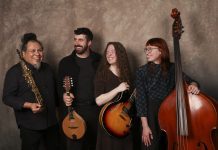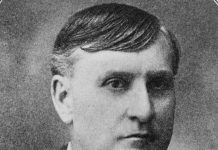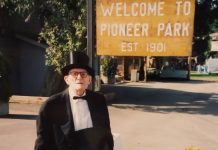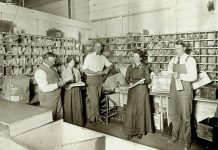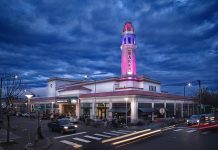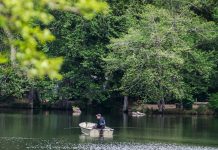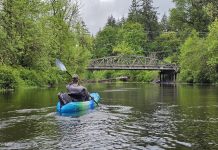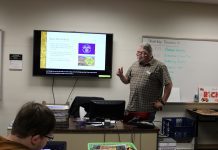Jess Brewster visibly shudders when I refer to him as an artist. “I don’t claim any artistic ability; I just whittle,” he says. “My kind of carving is not a planned carving. The wood dictates what it will be.”
Jess was born in Oklahoma’s Dust Bowl. He describes his family as being the poorest of the poor. His grandfather was a sharecropper, and there were 14 at the dinner table every night.
The sharecroppers worked before dawn, during the cool of the day, and would break midday for lunch and to whittle — and brag about their knives. Six-year-old Jess would watch and listen with great fascination, eager for the day when he could make his own woodcarvings.
As a young boy, Jess earned money picking cotton. He was saving his pay for a pair of boots that had a side scabbard for a whittling knife. The farmer he worked for kept track of Jess’ earnings, and by Christmas, Jess’ mother made sure those boots were under the tree for her young son.
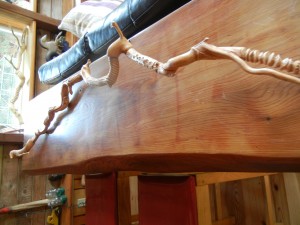
Christmas morning, Jess pulled on the new boots, found his first stick to carve, and promptly cut his finger open. It’s been more than 80 years since that first carve. Jess says he rarely cuts himself these days.
Planting Roots in Whatcom County
In 1939, Jess dropped out of high school to enlist in the Navy. When he got out of the service, he returned to Colorado, where his family had relocated. Here, Jess attended community college and met Shirley, the girl next door.
In 1959, after Jess completed a degree in animal husbandry at Cornell University, Jess and Shirley moved to Orcas Island and got married.
Shortly after moving to Orcas Island, Shirley’s work as a schoolteacher brought the couple to Sedro Woolley. It was here that Jess decided he wanted to become a social worker.
However, soon after going back to school, Jess changed his career course and decided to become a reading specialist. He was quickly hired on as a special education teacher with Bellingham Public Schools.
All the while, Jess continued to carve, slowly accumulating a body of work.
Hand Carving at Home
Jess says he only ever wanted to make enough money from his carvings to earn his next carving tool, so he did a few projects on commission. He carved the Orcas Village sign while he lived on the island in the 1950s. He carved a few wooden signs around Whatcom County, a few at a handful of Bellingham schools, and at Battersby Field and Gordon Carter Conservation Site.
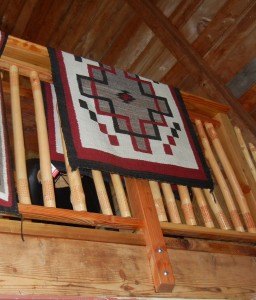
Today, Jess, who is now retired, creates most of his carvings in a beautifully hand-finished barn located on his property. The barn is a comfortable, well-lit, window-lined building, where Jess’ handiwork can be found at every turn.
The railing banisters that line the barn loft are a great example of this. Every dot, cut and cup is made by hand with a chisel. Jess calculated how many of the cuts are on the railing, and he estimates they total 16,000.
Jess carves because carving brings him joy. He never plans a carving. He just makes a cut, and another, and then another. When and if he gets bored, he puts the project down or starts on another pattern. Not all wood can be carved, he says, and having the wrong tools can make any job impossible. When other woodworkers see his work, they can’t believe it’s done hand done.
Carving a Legacy
Over the years, Jess’ work has been displayed throughout Whatcom County at Allied Arts, The Marketplace in Fairhaven’s Sequoia Building, and at the Jansen Art Center in Lynden. Jess says everything he makes is touchable, and only one piece has ever been broken.
Jess doesn’t sell any of his carvings. Once in a great while, Jess will give one away, but he doesn’t understand why anyone would want his work. Jess admits he agonizes when making things for people, wondering if it is good enough, if the recipient will like it, and whether or not it’s worth anything. He assumes it will eventually end up cluttering someone’s closet, and if that’s the case, he’d rather clutter his own.
And cluttered it is. Jess’ home is crammed with completed and in process projects alike, all stunning and each with a story to share. His work is a tactile link to his past.
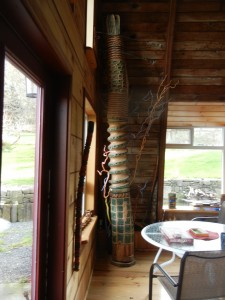
One of the many stories Jess likes to share is about a piece called the “Therapy Tree.” In the early 2000s, Jess’ next-door neighbor’s maple tree fell onto Jess’ property. Jess hauled the tree into his barn where it remained untouched for several years. In 2008, Jess suffered an injury to his neck, forcing him to undergo physical therapy. Jess decided this was a perfect time to work on the tree. Jess’ son, Tom, helped devise a wooden cradle that would enable Jess to carve and easily turn his work as needed. Then 80-year-old Jess started carving for just ten minutes a day, but by the end of the year, his endurance and strength returned and he found himself working on the tree for five hours at a time.
Jess says his current life expectancy is “five minutes to ten years,” but growing older hasn’t stopped him from carving and continuing to add to his extensive collection of finished work.
If you want to see Jess’ work, he says it comes with a high price: you have to listen to his stories. To schedule a viewing of Jess’ work, contact Jess via email at brewsterhat@comcast.net.




